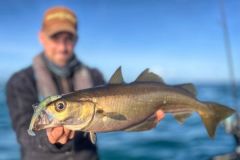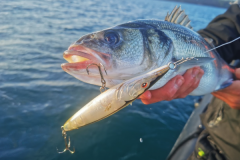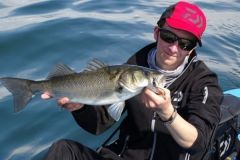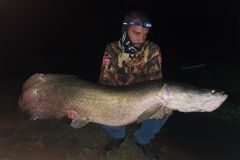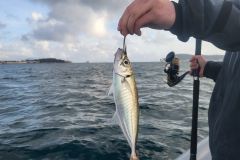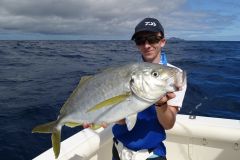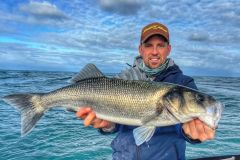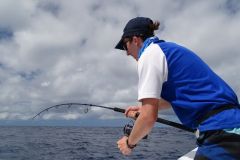Targeting bluefin tuna
When it comes to bluefin tuna fishing, you need to be well equipped to avoid unpleasant surprises. The average fish size is between 50 and 100 kg, but very large fish weighing over 150 kg are increasingly common. As bluefin tuna is a species subject to very specific regulations, we need to adapt our equipment to easily release the fish in the best possible conditions.
Ideally, a single circle hook should be used at the head of the fish. This hook will bite the tuna in the corner of the mouth to avoid the wire rubbing on the teeth or damaging the fish. Triple hooks should not be used to avoid causing gill wounds which would inevitably be fatal for a bluefin tuna. A classic single hook can also be used, but you'll need to make very strong hooks, which are not always effective on very large fish with extremely hard pucks.

Targeting amberjack and lichen
Amberjack and cuttlefish are the "Grail" fish of the Mediterranean. These fish are much easier to catch with a livebait than with a lure, although a suitable rig is required. These fish have no sharp or pointed teeth, but they do have a very powerful jaw lined with tiny teeth, often called "rasps".
These fish are very good hunters, but not as fast as tuna. When fishing with very fast livebaits such as bonito or tuna, amberjacks and cuttlefish tend to grab the back of the fish. A rig with a single hook in the head frequently fails to bite medium-sized fish (5 to 20 kg), whose mouth is relatively small. The addition of a second single or treble hook, placed in the back of the fish, drastically increases the chances of hooking the predator.

A few rules to follow
Although using a circle at the head seems like a good idea, if you add a classic single or a triple to the rig, the combination of the two will not be good. In principle, using a circle hook means not hooking, but rather increasing the tension in the line as gradually as possible so that the hook slides into the fish's mouth and locks when it reaches the corner of the mouth. On the other hand, a classic treble or single hook requires powerful hooks to bite properly and exceed the depth of the barb so that the fish doesn't unhook.
For example, if a fish bites on a rig consisting of a circle and a triple, you'll never know whether it's necessary to hook or not. If the thief hook is the one that bites first, and you gradually increase the tension without hooking, the fish will unhook easily. On the other hand, if the circle is in a better position to be hooked, but you strike too hard, it will slip out of the fish's mouth.


 /
/ 


